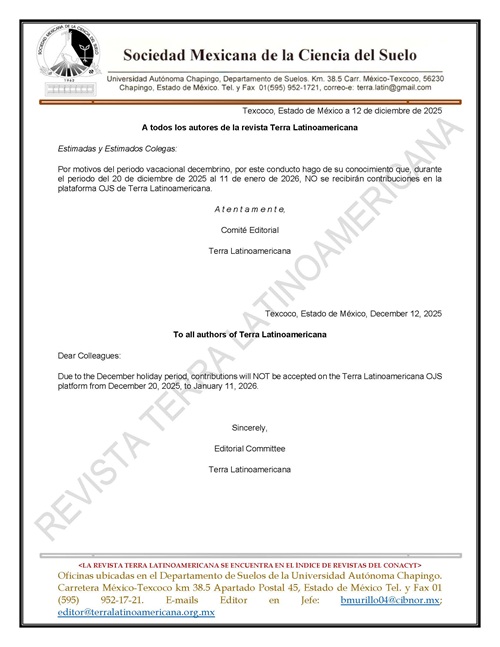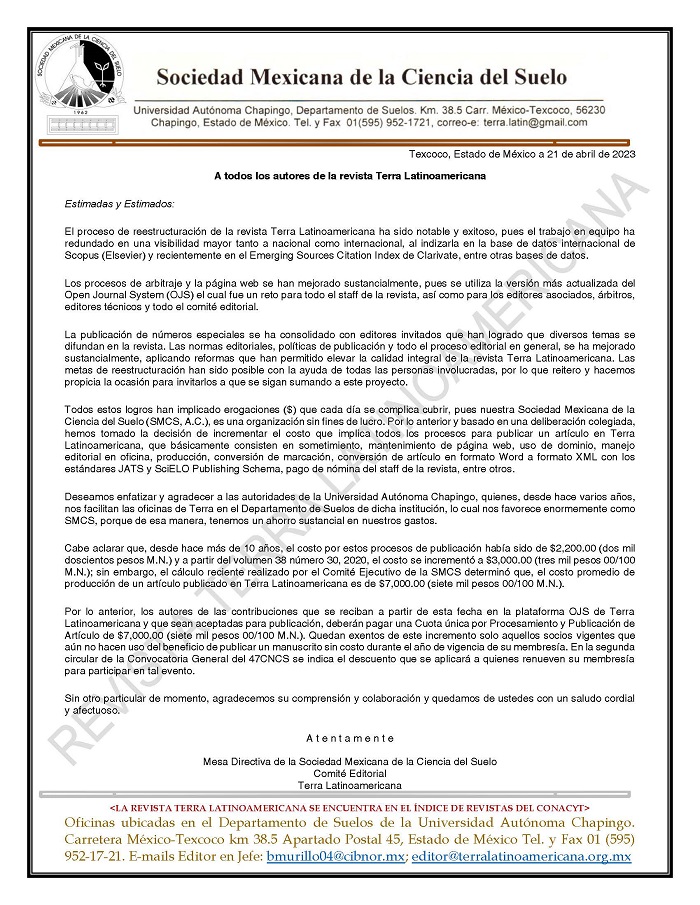Erosion Risk by Grazing Intensity and Frequency in Rangelands Under Four Management Conditions in the Mexican Altiplano
DOI:
https://doi.org/10.28940/terra.v42i.1966Keywords:
multivariate analysis, desertification, intensity of defoliation, defoliation periodicityAbstract
Rangelands are feeding sites for livestock through spontaneous vegetation. In the Mexican highlands, 95% of the ejidos (common land) and 80% of private ranches have recorded severe and widespread overgrazing of their grasslands. Thus, the objective of the present study is to try to reverse it by comparing how grazing intensity and frequency of various animal species impact the rangeland conditions and the inherent degree of risk of erosion in four livestock production units adjacent to each other in the same shared rangeland site but with dif ferent individual use. An ejido, a private ranch grazed by sheep for more than 60 years, and two portions of another private ranch were compared, one excluded from grazing for more than 10 years and the other one used by cattle for beef production. For each production unit, its structural and functional vegetation attributes and current soil cover were evaluated through four transects with the quadrat method centered on a point. With a completely randomized experimental design, the basal diameter results of the present perennial plants were analyzed according to their forage quality, and the bare soil portions were covered with vegetation, mulch, feces and stones. Furthermore, a multivariate analysis ordered and classified a matrix of 16 vegetation and soil variables evaluated ×16 transects studied to determine the rangeland condition and inherent erosion risk degree. The sections were excluded and destined for grazing with cattle on the private ranch recorded the best range condition and the lowest risk of erosion. The botanical composition of origin identical in the four production units is already dif ferent, and various forage plants no longer exist either in the ejido or in the sheep ranch due to their low tolerance to grazing.
Downloads
Publication Facts
Reviewer profiles N/A
Author statements
- Academic society
- Terra Latinoamericana
- Publisher
- Mexican Society of Soil Science, C.A.

















